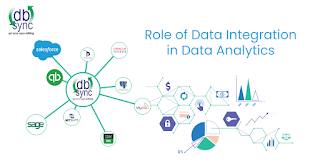When making important decisions, people often recommend
“going with your gut.” For today’s data engineers and scientists, this “gut
feeling” is not enough–it’s all about the data.
The explosion of data-capturing technology has created a Big
Data phenomenon – an entirely new class of data analytic tools and techniques
that allows business users and analysts to become data analysts. However, with
data spread across multiple systems and platforms (such as OnPremise and
OnCloud), one cannot make use of these dynamic data analytic tools/techniques
until the information is integrated.
DBSync’s Cloud WorkFlow Enterprise–a mature and
fully-featured Integration Platform-as-a-Service (iPaaS) built for
the cloud as well as OnPremise systems–is the integration answer. Through its
comprehensive, cutting-edge framework and architecture, it enables business
users and technical analysts to accelerate analytics through various platforms
like Redshift and other cloud warehouses. DBSync’s iPaaS collects data from
multiple sources in the front, middle and back offices, and feeds it into the
data analytics systems. Unlike other heavy OnPremise legacy tools, DBSync can
integrate data across platforms, solving the common problem of having
disconnected, channel-specific systems in place that work well in their closed
environment, but completely fail when used together with other channel or cloud
systems.
Unified View
DBSsync combines ease of use, sophisticated transformations,
extensions for on-premises, and cloud integration with a managed list of close
to 30 different systems called “DBSync connectors.” Integrating data from
various sources into a single, unified view has never been more
straightforward. As with any integration solution, integration begins with the
ingestion process and includes steps such as cleansing, ETL mapping, and
transformation. This type of integration ultimately enables analytics tools to
produce useful, actionable business intelligence with a constant feed of data,
on a “real-time” or timely basis.
Data Governance
Analytics performed on top of incorrect data yields
incorrect results – this can be detrimental in the quest to operationalize
innovation. Data governance is of primary concern to IT organizations charged
with maintaining the consistency of data routinely accessed by citizen data
scientists and citizen integrator populations. Gartner estimates that only 10%
of self-service BI initiatives are governed to prevent inconsistencies that
adversely affect the business.
Data discovery initiatives that use desktop analytics tools
risk creating inconsistent silos of data. Cloud data warehouses afford
increased governance and data centralization. DBSync helps to ensure robust
data governance by replicating source tables into Redshift clusters, where the
data can be synchronized at any time interval desired, from real-time to
overnight batches. In this way, data drift is eliminated, allowing all users
who access data (whether in Redshift or other enterprise systems), to be
confident in its accuracy.

No comments:
Post a Comment